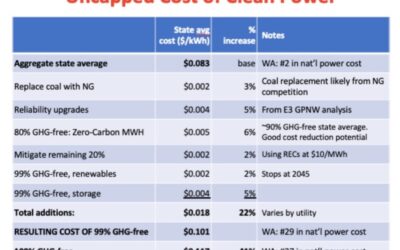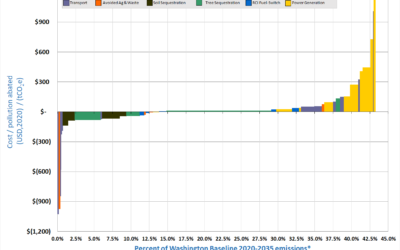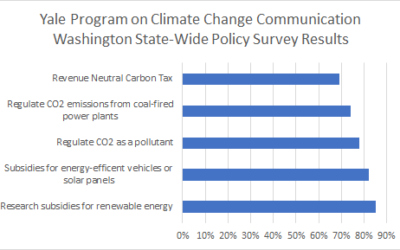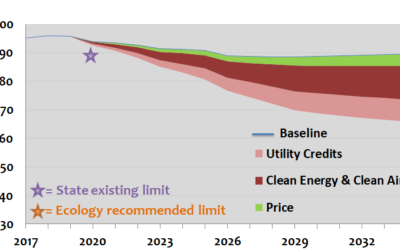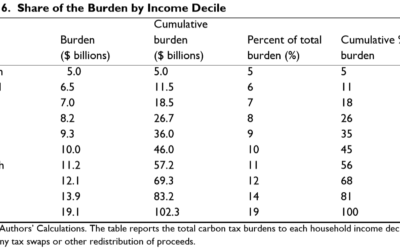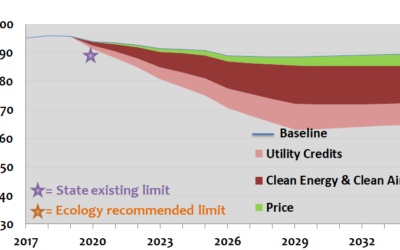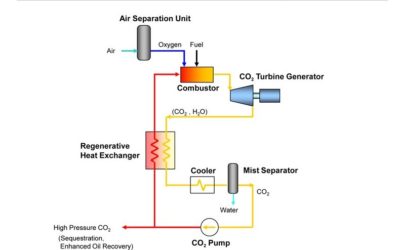All Stories
Analysis: Cost and Rate Impact of 100% Clean Energy
This analysis examines the rate impacts of eliminating coal power, achieving an 80% clean energy standard by the year 2030, and a 100% clean energy standard by the year 2045. CaPI relies on a variety of sources, and deploys its own utility-specific model.
Kalama Methanol Plant – Review of Greenhouse Gas Impact Assessments
Click Following Link For Full Report CaPI_KMMEF_GHG_Analysis_12-13_FullReport Kalama Methanol Plant Offers Strong Prospects for Net Global Greenhouse Gas Reduction Benefits Analysis published by the Clean & Prosperous Institute shows new industrial facilities can...
Visualizing cost-managed approaches to reducing WA emissions
To date, there is no Washington Specific MAC Curve that provides more than a cursory glance at carbon reduction measures specific to our state. The Clean & Prosperous Institute (CaPI) has decided that the time has come to undertake a more comprehensive, statewide look at MAC opportunities in our state. CaPI is actively looking for partners and funders to carry this project through to a robust tool for policymakers and businesses.
Review of Climate Policy Options
Evaluating regulations, subsidies, pricing mechanisms, and hybrid policies Abstract: There is a growing recognition among businesses, policymakers, and the general public regarding the economic and societal risks of climate change. The latest, most urgent...
The Future of Climate Policy After I-1631
Wed, November 28, 2018, 3:00 PM – 5:00 PM PST | Mercer Island Community & Event Center
Purpose: Inform community about views of electorate, Resolve post-election tensions & align towards cooperative success, Invite engagement in achieving desired outcomes, Set framework for 2019 legislature
The prospects for I-1631 eliminating 20 million tons of carbon pollution annually by 2035
This analysis aims to answer the following central question: What cost-performance must I-1631 investments in carbon reduction achieve in order to meet the state’s 2035 emissions target and trigger a freeze in the rate of fee increase?
Appendix A: Initiative 1631 Funding to Offset Increases In Lower Income Energy Burdens
To project the potential for revenue to be used for relieving the energy burden of people with lower incomes CaPI examined data on median household income by county (American Community Survey (ACS), 2016) and the share by county of income to poverty levels (also from the ACS, 2016). By this method, 39.7% of the populations would be covered by either the federal poverty line or the area median income designation. Including 40.8% in rural counties and 39.4% in urban counties.
Appendix B: Initiative 1631 Detailed Scenario Results
In this Appendix, we present detailed projections for the two available funds scenarios, each with four investment pathway cases that were the focus of this study.
Volcanoes, Forests, and Farms: A Carbon Policy That Works for Washington—and Puts All of Washington to Work
We absolutely must sequester carbon on a large scale, and this technology is one of several with the potential to implement Plan B — carbon negativity. Washington is possibly the best region in the world do to so economically. The combination of Washington’s biomass-producing industries and unique geologic formations make us uniquely well suited to the task.

